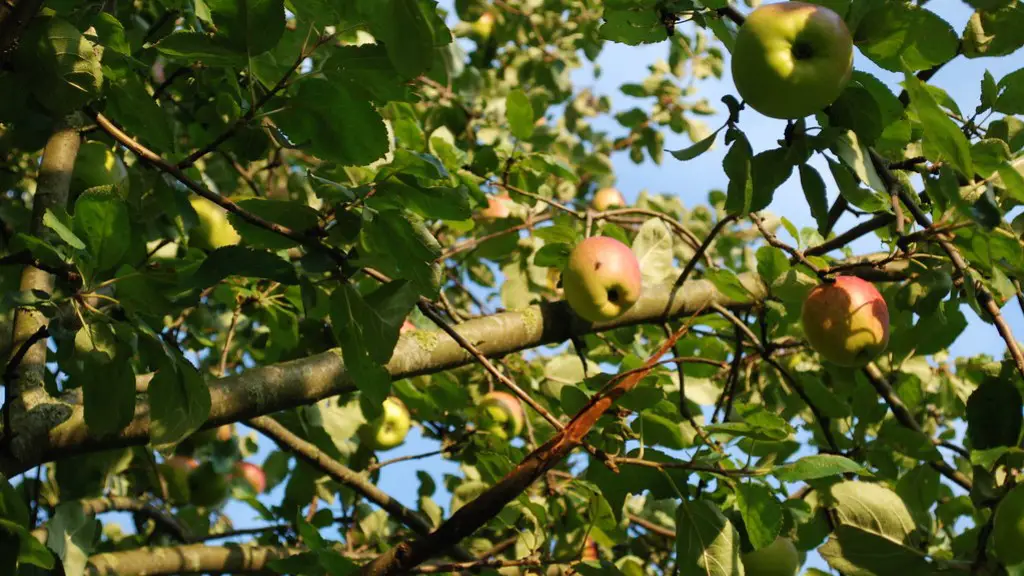Avocado trees are a popular choice for potted plants. They are attractive and produce beautiful flowers, as well as delicious avocados. But how much water does a potted avocado tree need? Is it a lot? Does the amount of water vary based on the season or other factors?
The amount of water a potted avocado tree requires may differ depending on the size of the pot, the type and form of soil, and the climate. Aesthetically, a pot of moderately moist soil is ideal. Providing too much water can be just as harmful as providing too little, so it is important to find the right balance.
In general, a potted avocado tree needs about 1 to 2 inches of water every week. You can check the wetness of the soil by sticking your finger about two inches down into the pot. If the soil feels dry, it is time to water. If the soil feels wet, simply wait another day or two before watering.
The avocado tree is quite hardy and tolerant of harsh conditions, but it is important to water accordingly so that your tree will be healthy and strong. If the soil becomes too dry, the tree won’t be able to properly absorb nutrients, and its leaves will start to droop and turn brown. On the other hand, if the soil is too wet, the roots can become waterlogged, leading to root rot.
It is best to water the avocado tree with lukewarm water to be on the safe side. This will help the roots absorb water quickly and evenly, allowing the plant to get the most out of the water. Also, it helps to add mulch or sawdust to the soil to help retain moisture and prevent it from evaporating too quickly. Your tree should be kept in a sunny spot with indirect light so it can get the light and warmth it needs.
Keeping a potted avocado tree healthy requires knowledge of the proper amount of water to provide, as well as providing other essential nutrients such as nitrogen and potassium. You should also make sure to avoid over-watering, as this can lead to root rot. Keeping a consistent watering schedule will help to ensure your avocado tree stays healthy and produces great results.
Insects and Other Pests
Certain pests, such as scale insects and mealybugs, can affect the health of a potted avocado tree. To combat these pests, you should inspect your tree periodically and take action if any of these pests are present. You can use a pre-mixed insecticidal soap or neem oil to get rid of pests. Make sure to follow the directions on the insecticide product and use it in a well-ventilated area.
Regularly removing debris and fallen leaves will also help prevent an insect infestation. Pruning should also be done in either the spring or early winter to help the tree keep its shape. Lastly, adding a layer of mulch can help protect the tree from extreme temperatures and reduce the risk of any pest infestations.
Fertilizers
Avocado trees grown in pots require fertilizers for proper growth and production. It is best to use a water-soluble fertilizer so that it can be applied easily and evenly. The mulch or soil you use may already be enriched with nutrients, however, so it is important to check before applying any fertilizer. Organic fertilizers are preferable, as they release nutrients more slowly and are kinder to the environment.
Fertilizers should be used once a month during the growing season, usually in the spring and summer months. Make sure to dilute the fertilizer to half the strength suggested by the manufacturer before applying it to the potted avocado tree. If your avocado tree’s leaves are turning yellow, this could be a sign of over-fertilization, so you should stop using the fertilizer for a period of time.
In addition to fertilizer, you should feed your tree with compost or manure during its growing season. The compost or manure should be applied in a circular motion around the pot. This will help the water to reach the roots more easily and allow for better absorption of nutrients.
Pruning
Pruning is often required for potted avocado trees if the plant grows too large for its pot. Pruning can help control the size and shape of your tree, and it can also help the tree to produce better quality fruit. Pruning should be done in the early spring before new growth begins, as this is when the tree is most receptive to pruning.
When pruning, you should remove any dead or diseased branches first. This will help to prevent the spread of any diseases or infections. You should also try to shape the tree so that it is not too dense on the inside. Removing any crossed or untidy branches will open up the tree, allowing sunlight and air to reach the other branches.
It is also important to use the proper tools when pruning an avocado tree. A sharp pair of pruning shears is essential so you can make the cleanest cuts possible. Also, make sure to use sterile tools to avoid any spread of infection or disease.
Fruit Production
Fruit production in potted avocado trees can vary depending on the size of the pot and how much sunlight the tree receives. If the pot is too small, the tree will not be able to bear as much fruit. An ideal pot size should be at least 18 inches wide and deep.
The sunlight a tree receives can also affect its fruit production. An avocado tree requires direct sunlight for at least six hours a day, so it is best to keep it in a spot with plenty of light. You should also provide a pollination partner for the tree so that it will be able to produce quality fruit.
In general, it will take three to four years for an avocado tree to start producing fruit, and it can take up to seven years if the pot is too small. On the other hand, an avocado tree planted in the ground can take up to five years to begin producing fruit.
Care and Maintenance
In order to ensure that your potted avocado tree remains healthy and vibrant, you should provide it with plenty of water, fertilizer, and sunlight. You should inspect your tree regularly and take steps to protect it from pests and diseases. Pruning is also important to keep your tree in shape and healthy.
It is also important to check the roots of your tree periodically to ensure they are healthy. These roots should be white and firm; if they are brown or soft, this could be a sign of root rot. If this is the case, you should remove the tree from its pot and inspect the roots closely.
Finally, you should use a potting mix that is rich in organic matter. This will help your tree to stay healthy and strong. The best potting mix for avocado trees is one that consists of a mix of peat moss, compost, and sand. You should also keep the soil moist but not soggy, as too much water can cause root rot.
Temperature
When it comes to taking care of a potted avocado tree, temperature is a key factor. Avocado trees need to be kept in an area with temperatures between 60 and 80 degrees Fahrenheit to remain healthy. If the temperatures are too hot or too cold, this can cause the tree to become stressed and make it more susceptible to pests and diseases.
When temperatures become too cold, you should consider protecting the tree with layers of mulch or burlap bags. You should also consider bringing your tree indoors when temperatures reach below freezing. During the summer months, it is important to provide plenty of shade and ventilation to keep the tree from becoming too hot.
You should also avoid exposing your tree to any sudden changes in temperature. It is best to acclimate the tree to its new environment gradually. This can be done by gradually exposing the tree to longer periods of direct sunlight and gradually increasing the amount of water it receives.
Harvesting
When it comes time to harvest your tree’s avocados, it is important to do so carefully. The best way to tell when the fruit is ripe is to check the color. When the avocados are deep green with a hint of yellow or violet, they are ready to be picked. Carefully cut the fruits off the tree using sharp pruning shears or a knife.
It is important to avoid bruising or damaging the skin of the avocado during the harvesting process. The best way to do this is to gently squeeze the fruit without applying too much pressure. If the fruit yields to gentle pressure, then it is ready to be picked.
You should also avoid storing the avocado for too long before consuming it. The avocado should be eaten as soon as possible after harvesting to guarantee freshness and flavor. If you need to store it for longer, you should place it in a cool, dark place and consume it within two to three days.



